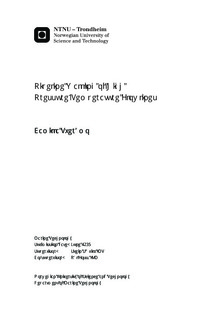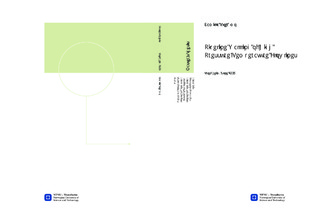| dc.description.abstract | The offshore pipeline industry are facing more complex design challenges as the oiland gas industry moves into deeper water in search for hydrocarbons. One of thesechallenges are related to high pressure/high temperature pipelines subjected tofrequent start-up and shut-downs during its? lifetime. One consequence of this kindof load cycles is that the pipeline may move cycle wise and axially towards its? coldend, which may be detrimental for the end connection design. This phenomenonis termed pipeline walking.The SAFEBUCK Joint Industry Project was initiated in 2002 to assess the challengesconnected to pipeline walking, in addition to other related issues. Throughthis project several aspects affecting the walking behaviour have been established.These factors have, in this thesis, been addressed through a sensitivity analysis,where the seabed conditions ? hereby the equivalent friction factor ? the seabedslope, the effect of a global lateral buckle and the effect of a connected SCR havebeen included.The sensitivity study was performed on a pipeline modelled in SIMLA with 900beam elements, each connected with a spring to a seabed beam element. Thisoriginal case have here been labelled the base case. Four cases were analysed, wereone factor were changed throughout each of the cases. The pipeline was subjectedto a transient temperature profile in each case, provided by IKM Ocean Design,to simulate the heat transfer in a pipeline.For the seabed conditions case, the walk per load cycle increased with increasingequivalent friction factor up to a certain point, before the walk per load cycledecreased as the equivalent friction factor continued to increase. The seabed slopecase showed that the relationship between walk per cycle and increasing angle isapproximately linear. In addition it was established that when the seabed slope issteep enough, the pipeline will walk towards its? warm end. In the global lateralbuckle case on could observe that the effective axial friction force was relievedin the buckle, and that the walk per cycle increased as the length of the buckleincreased. When a steel catenary riser tension was introduced, the axial movementof the pipeline appeared to fluctuate around the walk per cycle values for the basecase.An analytical analysis was performed, however, the accordance between the numericaland analytical results was not as good as predicted. For this reason animprovement of the analytical model is suggested for further work. An other topicwhich is relevant for further work is an extension of the seabed conditions case toinclude mobilisation length. Additional sub-cases in the steel catenary riser case, aswell as creating a new case by combining the impact from several walking inducingfactors are other possible topics. | nb_NO |

